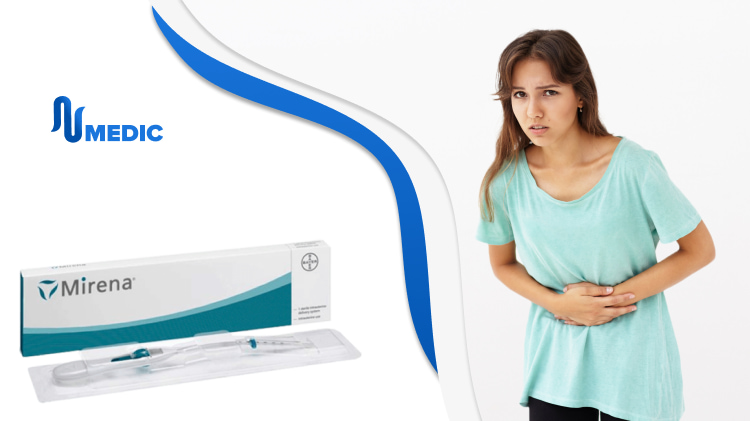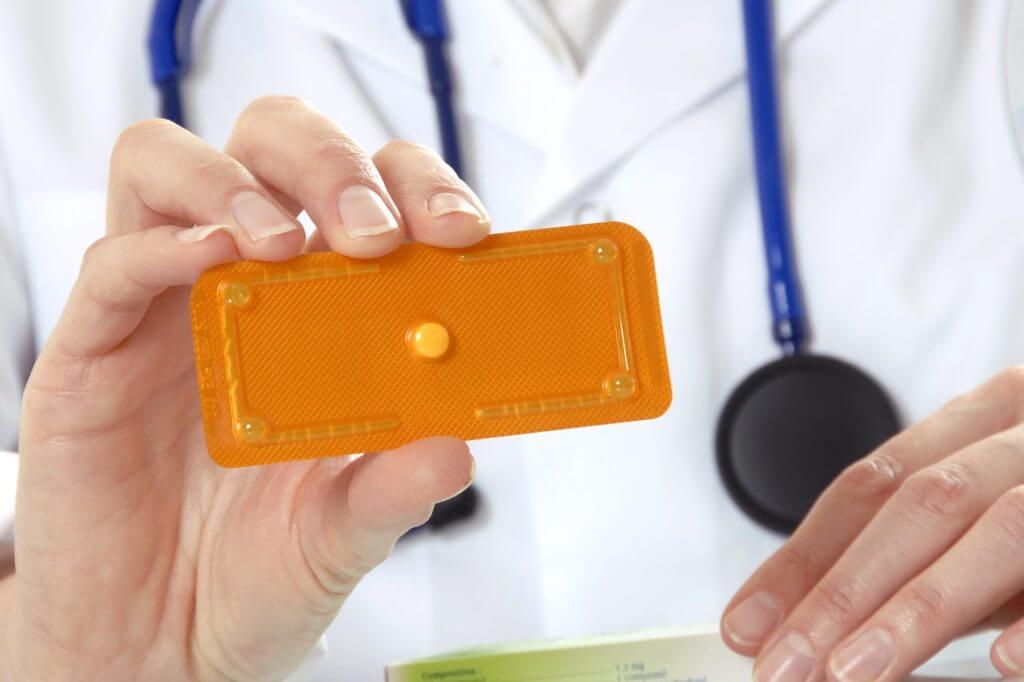IUD Cramps: Why Do You Get Them and What to Do?

Cramping – an unpleasant sensation each woman experiences at some point. Some can feel it before and during their periods, and others occasionally notice it during their cycle, but did you know cramping is a quite common side effect after intra-uterine devices insertion? It is slightly different than menstrual cramps and can be caused by numerous factors: from body peculiarities to poor health conditions in general. Today, we would like to discuss this topic in more detail. Let’s discuss why women experience cramping after an IUD insertion and removal and learn more about effective methods that will help to take this condition under control.
Kind reminder: Everything presented in this article is meant for informational purposes only. Before trying anything you read here, consult with a doctor to make sure the method you choose is safe for you.
Is It Normal to Have Cramps After an IUD Insertion?
An IUD is an effective method of birth control often used in combination with other pregnancy prevention methods (like condoms). It is available in two variations – a copper IUD and hormonal IUDs – and the best one is picked after a consultation with a doctor and careful medical examination.
Practically all patients feel cramping after the insertion, which is entirely normal. The thing is, in order to place this device properly into the uterus, a small tube with an IUD in it goes through the cervical canal to the target spot. And cramping (just like period cramps) is a natural reaction of a cervix opening; pain levels vary from person to person. In case a woman usually experiences mild cramps, post-insertion adverse reactions will be minimal; on the other hand, if severe cramping and pain relievers go side by side during periods, painful sensations will more likely occur after the procedure. The same situation is with women who’ve never given birth.
You can also visit our article IUD vs Implant: What’s the Difference. This will help you understand all the subtleties in more detail and make the right choice.

How Long Do Hormonal IUD Cramps Last?
The durability of mild cramping differs just like their severity – from a few hours to a few days. Once again, this is an individual factor that varies from woman to woman based on certain health and body peculiarities. Moreover, it is better to be ready that during the first few weeks, unpleasant sensations may occur at random times and cause mild discomfort.
If the pain becomes severe and uncontrollable (even after using painkillers), it is crucial to get in touch with a medical professional and make an appointment to make sure the body gets used to a new device correctly and that there are no severe conditions you should be worried about. Safety should always be a priority; remember that!
What Else Should I Expect During and After the Insertion?
During the procedure, an intrauterine device is put into the uterus with the help of a special plastic tube. IUD strings should be properly placed and attached for the product not to move and hurt an individual. What can you expect during the insertion?
- Some women feel anxious during the procedure because of possible discomfort and painful sensations (that’s why some specialists recommend taking pain killers before it starts);
- Dizziness and nausea are also normal before, during, and after the process;
- Women who have already given birth in the past will be less likely to experience stronger cramps because their uterus has already gotten used to excessive stretching.
If anything feels weird during the procedure or you experience excruciating sensations afterward, it is crucial to inform a specialist about it to make sure everything is okay.
Can an Intrauterine Device Affect Menstruation?
Intrauterine devices can affect one’s menstruation cycle; that’s true. However, how exactly they affect an individual depends mainly on the IUD type – hormonal or copper IUDs.
- Hormonal IUDs (for example, Mirena) may cause heavy bleeding and cramping during periods of three-six months after insertion. Spotting on the skin is also a common side effect (it should decrease after approximately 90 days);
- Non-hormonal IUDs (also known as copper intrauterine devices) lead to heavier bleeding at first (approximately three months) and more painful cramps. Some women notice minor spotting between periods. After a few months, all symptoms that cause discomfort should reduce.
The best thing about IUDs is that, after some time, bleeding, cramping, acne, and other unfortunate adverse reactions should decrease or even disappear fully. Some women may even notice that their periods stop altogether.
The Best Ways to Relief Cramping After the Procedure?
As many women reported cramping typical for an IUD insertion, specialists proved that sometimes medical attention might be required to cure this unfortunate symptom. However, some things can be done at home to make sure the procedure won’t cause any significant harm and won’t affect young women’s health. So, let’s have a closer look at those!
Immediately
Even though these methods may not completely eliminate the unpleasant sensations, they can still reduce them and make it easier to go through the day. Here they are:
- Over-the-counter painkillers. It is better to talk with a doctor to pick the most effective option and safe dosage of the medication. Also, it’s worth mentioning any vitamins or prescribed medicines currently taken by a patient to make sure they are compatible with pills for pain relief;
- Heat. Just like with period cramps, keeping the belly warm can be pretty helpful. You may get creative with a method: a heating pad, hot water bottle, or a nice warm home-wear – choose whatever you like. It may also be helpful to have a hot bath or shower, but we recommend talking with a specialist before trying this method to see whether it’s safe for one’s individual case;
- Exercising. We understand that there is a chance a woman won’t even want to move after such a stressful procedure, but being active is a proven method of cramp relief, so make sure to give it a try;
- Correctly picked position. Certain yoga poses may stretch muscles and, in this way, loosen painful ones. Look for a tutorial on the Internet, and there are plenty of options online as well. Personally, we recommend such poses as One-Legged Forward Bend, Cobra, Pigeon, etc.;
- Acupressure. Try to find the sorest spots and apply gentle pressure on them. You may be surprised, but massaging an area in the arch of your foot (close to the heel) may bring fast pain relief.
In a Long Run
In case painful cramps are still there after a week you’ve had an IUD inserted, it probably means it’s time to consider long-term pain relief methods, as well as discuss them with a doctor:
- Try supplements. Vitamin E, omega-3 fatty acids, and other components are medically reviewed and proven to be able to eliminate painful sensations in the long run;
- Acupuncture. This procedure includes extremely thin needles inserted in certain body parts to stimulate specific points and, in this way, ease discomfort effectively. Of course, it is crucial to visit an experienced, well-educated professional and not the amateur who is only driven by their logic;
- Transcutaneous electrical nerve stimulation (TENS). During this treatment, small electric currents are delivered by a special handheld machine to stimulate target nerves and block nerve signals to the brain.
Methods to Reduce Cramping Used Before the Insertion
Cramping is a normal reaction after an intrauterine device insertion, as the body adjusts to the new object constantly present inside, and this process may take some time. However, if a person is worried that the side effects will be severe, certain methods can be used before the appointment to reduce the chances of extreme pain after this process. What are those?
- Be careful about what you eat, drink plenty of water, and maintain a healthy lifestyle. If you don’t eat or drink anything before the procedure, it will only make the situation worse;
- Stay calm. It sounds dumb, but the fact is stress and anxiety are able to make any treatment much worse and more painful. Talk to your doctor about all the worries, ask questions, try to meditate or practice breathing exercises – your body will thank you later;
- Take painkillers beforehand. Choose the based one based on your previous experience. It can be Ibuprofen, Naproxen, or any other brand that you find helpful. We recommend taking a pill approximately an hour before the appointment;
- Pick the perfect time based on your menstrual cycle. The last few days of the cycle are the best for an IUD insertion because the cervix is dilated and soft during it; thus, the chances of severe cramping after the procedure are much smaller.
When Should I Be Concerned About Cramps from IUD?
How the body reacts to the IUD depends on a patient’s health and body peculiarities, so it is pretty hard to predict what will happen after the insertion. The truth is, some bodies are not able to tolerate foreign objects inside, so cramping may never end for them. In this case, alternative methods of contraception should be considered to find the most effective and safe option.
When should a doctor be contacted immediately?
- If a patient experiences severe cramping for a long time;
- Unusually heavy bleeding occurs after the procedure;
- If people feel flu-like symptoms (chills, fever, etc.);
- Vaginal discharge has a weird smell or color;
- There are some significant changes in one’s periods (they are heavier than usual or, on the contrary, disappear generally).
Everything mentioned above can be a sign of infection or IUD expulsion, so it is crucial to inform a specialist and set an appointment as soon as possible. We also recommend talking to them if there is a chance you’ve got pregnant despite the presence of an IUD or if it feels like a device moved and is not placed correctly in the uterus.
If cramping continues after three months, it is better to visit a doctor and have them check the device’s position. Don’t try to change its placement or remove an IUD at home, as there is a chance to hurt yourself pretty badly.
The Final Word: About Cramping After an IUD Insertion
An IUD insertion is a fast procedure that can be done pretty quickly and painlessly if performed by a licensed specialist. There are a few methods that can eliminate discomfort during the appointment, but still, almost every woman experiences cramping after the insertion as the process involves forcing the cervix to dilate. During the first few days after the procedure, it is crucial to carefully listen to all the sensations to make sure an IUD is not misplaced. If severe cramping continues for a long time or heavy bleeding occurs, it is crucial to get in touch with a medical professional to ensure the recovery process goes as it should and that nothing threatens the patient’s health. Hopefully, you found the information and usefull products in this article helpful and will use it in the future for your own beneficial experience. Stay safe!






